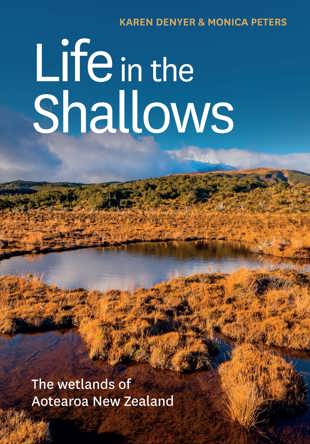Reviewer Jenny Nicholls has written about Life in the Shallows: The wetlands of Aotearoa New Zealand by Karen Denyer and Monica Peters for Stuff.
‘Rarely, a book of popular science will have this effect on me. This week, it was a book about . . . all right, I admit it, a book about bogs, published on Thursday by Massey University Press.
Life in the Shallows: the Wetlands of Aotearoa New Zealand had been gathering dust on my desk, awaiting a review. I grew up on a farm, and I tended to think of swamps as boggy paddocks. “Only townies park next to rushes,” Dad once told me as he pulled an Aucklander’s Ford Escort out of the mud with his tractor.
I also have a tattered copy of that second-hand shop classic, The Bog People: Iron-Age Man Preserved (1969), a study of people mummified in northern European peat bogs. I bought it mainly because the author’s name is P.V. Glob.
After reluctantly cracking open Life in the Shallows, I was sucked in. It turned out to be an unexpectedly lively account of a vital part of the landscape, the animals and plants which live there, and the characters who study them: botanists, experts in soil, drones, natural treatment systems, restoration, collaborative Māori research, environmental DNA, citizen science, fish, insects, birds and bats, among other things.
As authors Karen Denyer and Monica Peters explain, our wetlands sequester much more carbon than forests, and we have, rather unfortunately, destroyed 90 per cent of them. While healthy bogs are net carbon sinks, drained peatlands are a carbon source. As the earth heats up, drying peatlands release lots of carbon.
Much work to preserve the remnants of our wetlands is being done by community groups, and Peters is keen, she says, to “sweep away desiccated formal language, jargon and tight stylistic conventions to create content that can be understood and then applied”. The book achieves this spectacularly well, conveying lots of information in a digestible format.’
Read the full review here.


